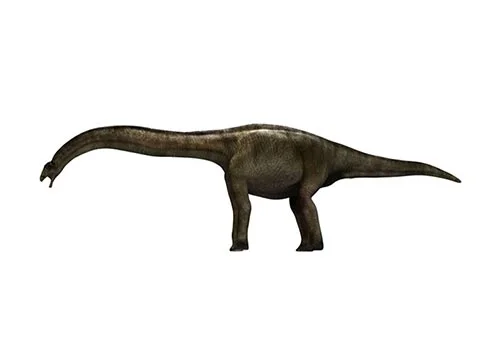Erketu (after the Mongolian deity)

Er-ke-tu
Daniel T. Ksepka & Mark A. Norell - 2006
Herbivore
Estimated 15 meters long
Sauropod
E. ellisoni (type)
Mongolia - Baynshire Formation
Late Cretaceous, 90 million years ago
Erketu Facts
Erketu is a genus of dinosaur that lived during the Late Cretaceous period, approximately 90 million years ago, in what is now Mongolia. It was named after the Mongolian deity Erkhii Mergen, who is associated with water and healing.
Erketu was a member of the family Therizinosauridae, which were herbivorous dinosaurs characterized by their long necks, sharp claws, and sometimes feathered bodies. It measured about 6 meters in length and is estimated to have weighed around 1 ton.
One of the most distinctive features of Erketu is its long neck, which was made up of 15 vertebrae. This is more than most other therizinosaurs, suggesting that Erketu may have had a longer reach for browsing on vegetation.
Erketu also had large, sharp claws on its hands, which it likely used for defense or for pulling down tree branches to reach foliage. It is believed to have had a broad diet, including leaves, shoots, and possibly some small animals.
The discovery of Erketu has provided important insights into the evolution and diversity of therizinosaurids in Mongolia. Its long neck and sharp claws set it apart from other known therizinosaurs, and its discovery has helped to expand our understanding of the adaptations and lifestyles of these unique dinosaurs.



